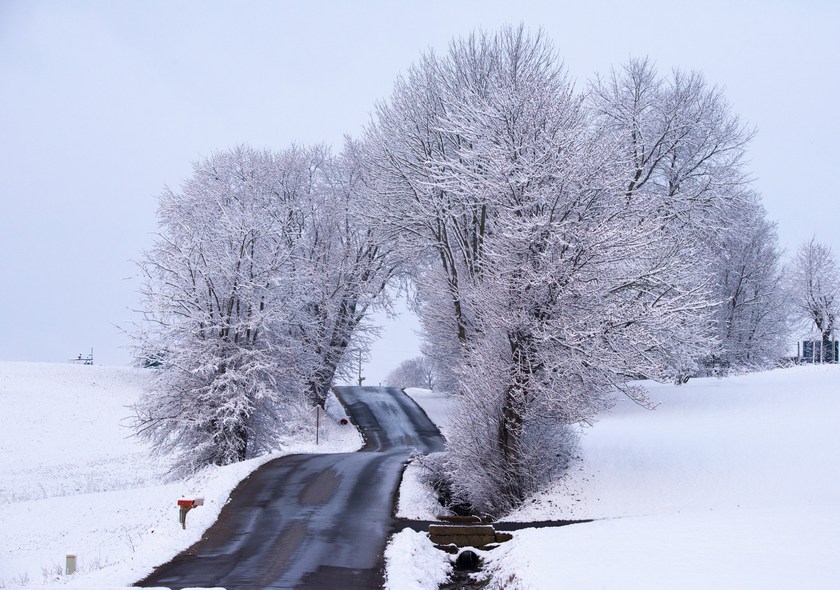The crunch of tires on fresh snow and the breathtaking sight of a mountain pass dusted in white – winter road trips offer a unique thrill. However, navigating icy roads and unpredictable conditions requires a different approach than your typical summer drive.
Winter Getaways: Top Tips for Navigating Snowy Roads
While snow-covered scenery beckons, winter driving presents unique hazards. From reduced visibility to slippery surfaces, the risks are real. Don’t let them deter you! By equipping yourself with the right knowledge and taking essential precautions, you can confidently embark on your winter adventure. This guide shares the essential tips and strategies for mastering winter driving. From preparing your vehicle to understanding driving techniques on snowy roads, we’ve got you covered.
Before You Hit the Road
A successful winter road trip begins long before you turn the ignition key. Careful planning and thorough vehicle preparation are crucial for ensuring a safe and enjoyable journey.
Vehicle Preparation
Ensure your vehicle is ready for winter’s challenges:
- Maintenance check: Schedule a maintenance check to ensure all fluids are topped up and that your battery is in good health. Confirm that lights, brakes, and wipers are functioning properly.
- Emergency kit: Pack an emergency kit that includes essentials like jumper cables, a flashlight (with extra batteries), warm blankets, a first-aid kit, a shovel, an ice scraper, and a bag of sand or kitty litter for traction if you get stuck.
Snow Tires: Your Winter Traction Advantage
If you plan on driving in snowy or icy conditions, snow tires are essential. They offer superior traction, braking, and handling compared to all-season tires. Install them before the first snowfall. For installation and maintenance services, check out local professionals to ensure your vehicle is winter-ready.
Even with four-wheel drive, which can assist with acceleration, it won’t improve braking or cornering on slick surfaces. Snow tires provide that extra grip to stay in control. For extreme conditions, consider studded tires, but check local regulations regarding their use.
Trip Planning
Forewarned is forearmed, especially for winter weather:
- Check weather forecasts: Stay updated on the latest weather forecasts and road conditions for your entire route. Be prepared to adjust your plans and avoid traveling during severe storms.
- Share itinerary: Always let someone know your travel plans, including your route and expected arrival time. This way, someone can raise the alarm if you don’t arrive as scheduled.
Driving in Snowy Conditions
Skidding can happen to even the most careful drivers. If your vehicle starts to skid, don’t slam on the brakes. Instead, gently steer in the direction you want the car to go. For example, if your rear end slides to the right, gently turn your steering wheel to the right. Once you regain control, straighten the wheel. Moreover, snow and ice can significantly reduce visibility. Use your defroster and wipers to keep your windshield clear, ensuring your wiper fluid is full and formulated for winter temperatures. The sun reflecting off snow can create blinding glare; therefore, using sunglasses or sun visors can improve visibility. In heavy snow or whiteout conditions, pull over to a safe location and wait for the weather to improve. It’s better to arrive late than not at all.
Winter Road Trip Essentials
Packing the right gear for your winter road trip can significantly enhance your comfort and safety.
- Warm layers: Dress in hats, gloves, scarves, and boots to protect yourself from the cold.
- Extra food and water: Pack non-perishable snacks and water in case of unexpected delays or if you become stranded.
- Phone charger: Keep your phone charged for communication and navigation.
- Gas tank: Keep your gas tank at least half full to prevent fuel line freeze-up.
Navigating Mountain Roads
Mountain roads present their own set of challenges in winter. Steep grades, hairpin turns, and rapidly changing weather conditions can make driving treacherous. If your vehicle has a manual transmission, downshift to a lower gear when going downhill. This will help you maintain a safe speed without overusing your brakes. Always pay attention to avalanche warning signs and avoid areas prone to slides. Additionally, stay informed about road closures, and be prepared to alter your route as necessary.
Wrap Up: Top Tips for Navigating Snowy Roads
Winter road trips provide a unique opportunity to experience nature’s beauty in a whole new light. By following these essential tips – preparing your vehicle, driving cautiously, packing wisely, and respecting mountain terrain – you can ensure a safe and enjoyable journey. Gear up, stay alert, and embrace the thrill of winter driving!
What about you? How do you drive on snowy roads? Feel free to share any tips and advice below!




